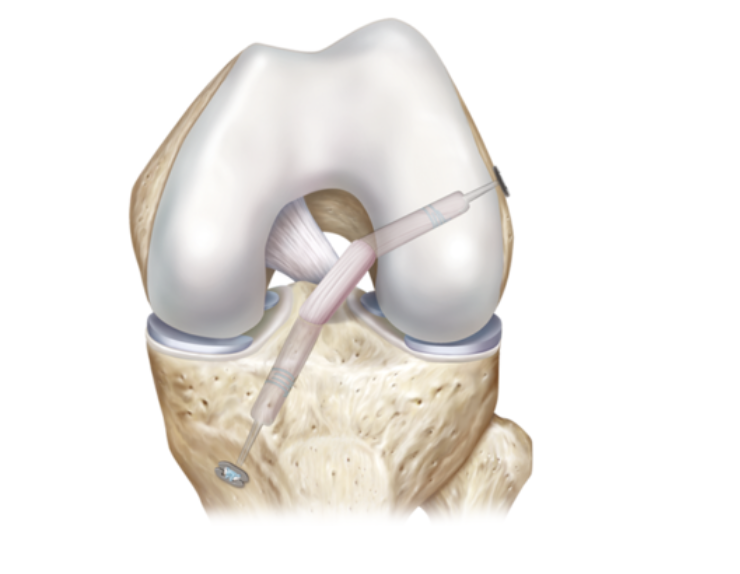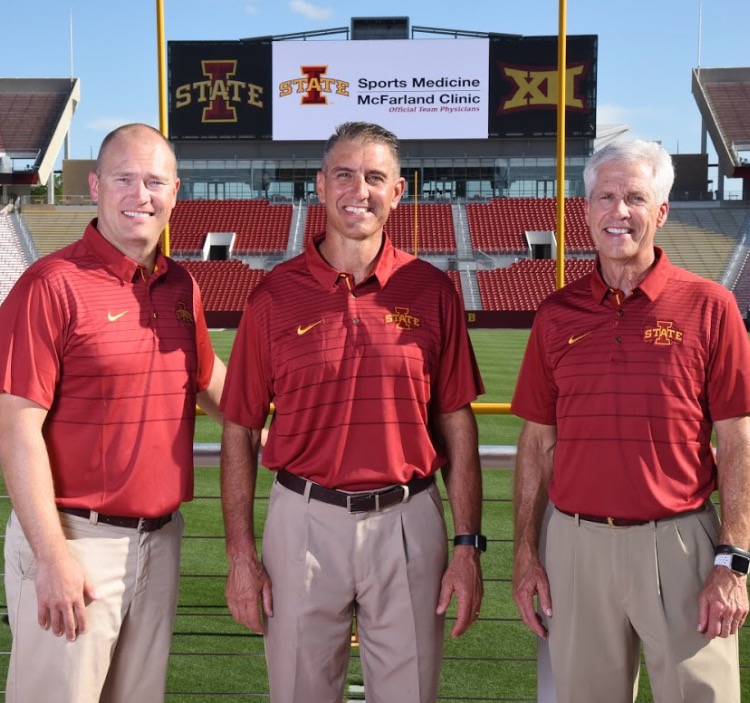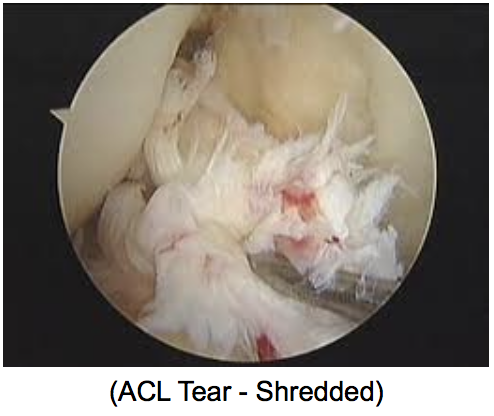Want to schedule an appointment with an orthopedic surgeon? Please call 515-239-4475 or click on the banner ad below to visit the McFarland Clinic’s brand new sports medicine website.
If you are a competitive athlete, the phrase “ACL tear” can be devastating. But it does not have to mean the end of your career. Orthopedic sports medicine surgeons can reconstruct the knee, giving you an excellent chance to get back on the field or court, playing at your competitive level.
And the same holds true for the weekend warrior who sustains an ACL tear. They can have surgery and obtain a stable knee that allows return to desired sporting activities and regular daily activity. Today, we will discuss a less invasive technique for ACL reconstruction that can help facilitate a speedy and effective recovery, as everyone wants to “get their life back”as quickly and as safely as possible.
As my partners, Dr. Buck, Dr. Warme and I have discussed in previous SDWB articles, the Anterior Cruciate Ligament (ACL) is the main stabilizing ligament in the knee and can be torn during participation in sports, typically in a non-contact pivoting type of injury. This leads to a knee that can ‘give out’ and buckle during sporting activities, making for an unstable knee.
The ACL connects the femur to the tibia and is usually shredded when it is torn; thus it cannot be directly sewn back together (a repair), but must rather be rebuilt (a reconstruction).
A substance is needed for the reconstruction and there are basically 3 options:
*** Patellar tendon autograft
*** Hamstrings tendon autograft
*** Allograft
(Autograft comes from the patient whereas allograft comes from a cadaver.)
Orthopedic studies indicate that patellar tendon and hamstring autograft have similar outcomes, but there are small differences in surgical technique that can influence post-operative rehabilitation.
Graft choice is important and most certainly should be discussed between the patient and the surgeon, understanding that every patient’s situation is different. But in general, the bigger the graft the better and the keys to a successful ACL reconstruction are to place a healthy and robust graft in the correct position and fixate it solidly so that early rehabilitation can be safely facilitated.
The ALL-INSIDE Graft-Link technique uses hamstring autograft, and presents some potential advantages to patients. It is minimally invasive and uses a single hamstring tendon (only the semitendinosus is used, whereas the usual hamstring autograft ACL also uses the gracilis tendon) which decreases morbidity and loss of hamstring strength postoperatively.
Bone sockets are used (rather th an bone tunnels), which limits soft-tissue dissection and preserves bone and periosteum. These advantages can potentially decrease post-op pain and facilitate recovery and rehabilitation. The technique also is anatomic in that independent tibial and femoral sockets are prepared allowing unconstrained placement of the ACL graft. This can have potential advantages in trying to reproduce more normal kinematics of the knee.
an bone tunnels), which limits soft-tissue dissection and preserves bone and periosteum. These advantages can potentially decrease post-op pain and facilitate recovery and rehabilitation. The technique also is anatomic in that independent tibial and femoral sockets are prepared allowing unconstrained placement of the ACL graft. This can have potential advantages in trying to reproduce more normal kinematics of the knee.

The ST hamstring harvest involves a small incision just below and medial to the knee cap and then the tendon is cleaned and prepared by our  physician Assistant (Kara Johnson, PA-C works with Dr Greenwald and Dr Buck, and Julie Fleener, PA-C works with Dr Warme). The tendon is quadrupled and sewn together and is then ready to place in the knee into the ACL sockets, which are drilled during the graft preparation.
physician Assistant (Kara Johnson, PA-C works with Dr Greenwald and Dr Buck, and Julie Fleener, PA-C works with Dr Warme). The tendon is quadrupled and sewn together and is then ready to place in the knee into the ACL sockets, which are drilled during the graft preparation.
See this instructive video for more details: All Inside ACL Reconstruction with Graft-Link

Hopefully you will never hear the phrase “ACL tear’ in the doctor’s office, but if you do, feel free to give us a call at 515-239-4475 and ask for the Orthopedic Sports Medicine surgeons that take care of the Cyclones!
Go State,
Thomas Greenwald, MD







